Making a Soft Light for Virtually Nothing
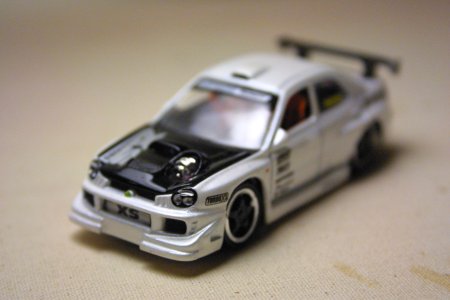
What is soft light?
The more I work on my web-site, the more I see the need for soft light. When I shoot product pictures to accompany the articles, I found that the product tends to have shinning surfaces that reflects lots of lights into the lens. These shinny parts create glare, which throws off the dynamic range of the picture. Even without shinning surfaces, the product casts ugly shadows that distract the reader from the main message that the photo is trying to convey.
There are two ways of eliminating the problem. One, use lots of light sources all around the subject. This method could create additional problems, such as casting multiple shadows, running lots of wiring, and the need to acquire lots of light sources. Two, use soft light.
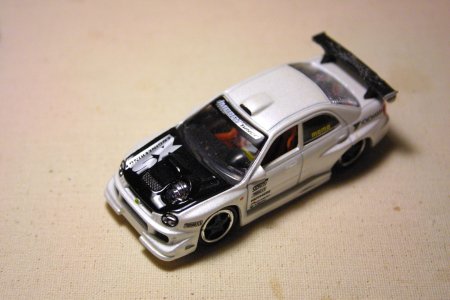
Direct lighting creates hot spots (glares), casts harsh shadows, and shows less surface features.
Soft light is basically light that has been diffused. Any light that does not directly strike on the subject's surface from the source is considered as diffused lighting. You can create a diffused light by bouncing the light source off the ceiling, the wall, or other materials. Unless you use an external flash unit, the amount of illumination on the subject can be greatly reduced through the bounce, rendering your continuous light source a little ineffective. Another method of diffusing the light is to pass the light through a translucent material.
A good example of a natural light source and translucent material is the sun and cloudy sky. Passing through the cloud layer, the sun's ray is diffused and casts very soft shadows. A cloudy day is a very good diffuser to the harsh sunlight, which is why many photographers consider a cloudy day to be a good portrait setting.
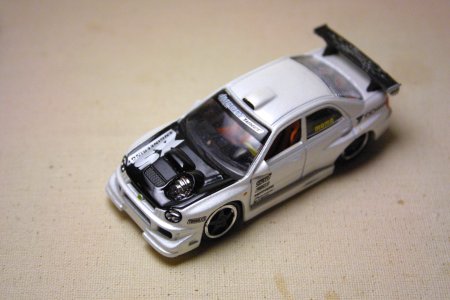
Diffused lighting casts softer shadows, provides even light distribution, creates no glare, and renders more surface features.
The sun and the clouds doesn't make a very convenient home studio soft light source. So, I bought a Photek Digital LightHouse kit that included a light tent, two 500-Watts light sources, black and white felt sweep, and translucent reflectors for $175. But my favorite trick, when I'm too lazy to bust out the Photek Digital LightHouse for a small product shoot, is to put together a soft light quickly for virtually nothing.
Find a light source around your home. I use a 60-Watts clip-on reading light. It costs five bucks at the local Wal-mart. I have quite a few of these lying around my home, so it costs me basically nothing. Use a piece of white paper in front of the lamp to diffuse the light. Simple! Now, you have a free soft light. This light source casts very soft shadows and glares, whether close or far from the subject.
Just be careful. Pay attention to the light. Make sure it doesn't burn up. Remember to remove the paper and turn off the light when you are done. Incandescent light bulb generates a lot of heat, so you should turn off the light in between shoots. I prefer to use fluorescent light bulbs. They are more efficient and does not generate much heat when on. A 15-Watts fluorescent light bulb is equivalent to a 60-Watts incandescent light bulb, while a 23-Watts fluorescent light-bulb is equivalent to a 100 Watt incandescent light-bulb. Since both fluorescent bulbs are rated less than the 60-Watts lamp, both light bulbs can be used in the lamp without any problems.
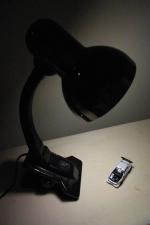
Direct light source on model. |
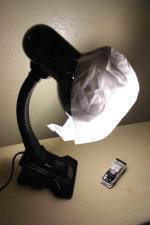
Diffused light source on model. |
You can change the softness of the light by using different-sized diffuser and placing the diffuser at different distance from the subject. A larger diffusing material is creates softer light than a smaller diffusing material. Placing the diffuser closer to the subject also softens the light more than moving the diffuser further away. If your light source and diffuser is too far and too small from the subject, it becomes a point source. A point source, like the sun, casts harsh shadows. In this case, you will want to avoid making a point source.
There are also lots of translucent material that you can find at home. Materials such as milk carton, colored paper, and cookie sheet come to mind. And I'm sure you have plenty of light sources at home, such as desk lamps, reading lights, and even flashlight. All of these materials can be used to make your own soft light.
Related Links
Related Links
- Building your own light box
- Build your own macro ring-light
- Concepts for Lighting and Digital Photography
- Constructing a dimmer for your Anton Bauer Ultralight 2
- DIY Home Studio Light
- How To: DIY $10 Macro Photo Studio
- macro flash tube prototype
- Milk Jug Diffuser
- The DIY guide to cheap studio lighting
- Photek 40" Softlighter, Diffusing Umbrella with Black Cover - Amazon User Reviews
- Photek Digital Lighthouse, Translucent Cloth Material Housing for Tabletop Still Life Product Photography, Large (18"x 18"x 27.5") - Amazon User Reviews
- Photek Digital Lighthouse, Translucent Cloth Material Housing for Tabletop Still Life Product Photography, Small (15"x 15"x 22.75") - Amazon User Reviews
- Photek Softlighter II, 54" Umbrella with Diffuser - Amazon User Reviews
- Putting Together a Budget DIY Lighting System
- The FinnBounce and the Smelfen - Bounce the Pop-up (PDF Version)
- The LCD ambient light
- Wal-Mart
178 Users Online
|
$10000-above $5000-$9999 $2000-$4999 $1000-$1999 $500-$999 $200-$499 $100-$199 $50-$99 $25-$49 $0-$24 Gift Certificate |
|




